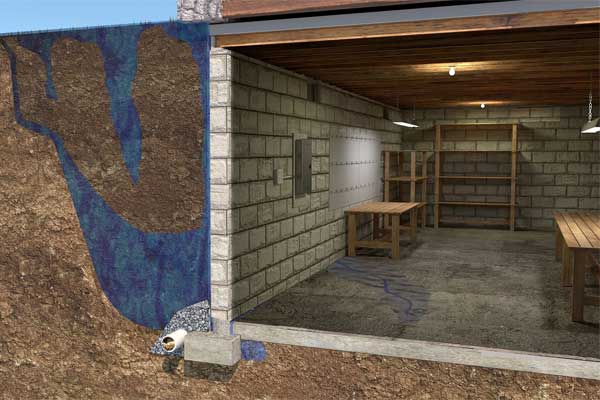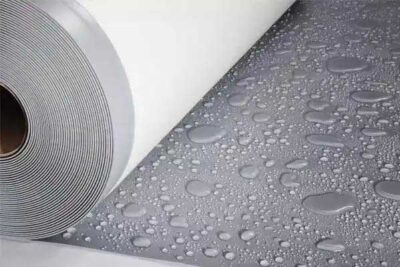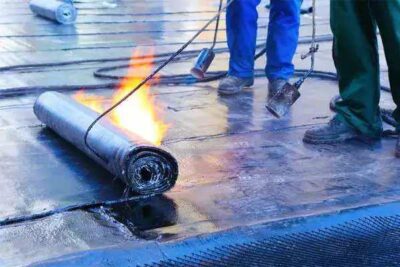
Contents
Basement waterproofing includes techniques and materials used to prevent water from penetrating into the basement of a house or building. Waterproofing a basement below ground level may require the application of sealants, the installation of drainage and sump pumps, and more. Basement waterproofing is often required by building codes for structures built at or below ground level. Waterproofing and drainage issues are particularly important in situations where groundwater is likely to accumulate in the soil or where there is a high water table.
The water in the soil causes hydrostatic pressure to be applied under the basement floors and walls. This hydrostatic pressure can force water in through cracks, causing major structural damage, mold, rot, and other moisture-related problems.
Basement waterproofing requires more than just fixing problem spots. It is important not only to find the sources of the leak, but also to check for problems in the foundation of the house and prevent future leaks.
There are several measures to prevent water from penetrating a basement foundation or to divert water penetrating a foundation:
- Interior wall and floor sealer
- Internal water drainage
- external drainage
- Exterior waterproofing coatings
- Box type waterproofing
- Foundation crack injections
Internal Sealants
Cracks and pipe penetrations in poured concrete foundations are the most common entry points for leakage. These openings can be closed from the inside. Strong adhesives, epoxies or urethanes, can be injected into the openings with pressure, thus penetrating the foundation from the outside and cutting the leakage path.
In masonry foundations, internal seals will not provide permanent protection against water penetration where hydrostatic pressure is present. However, interior sealants are good for preventing high atmospheric humidity inside the basement from being absorbed into the porous walls and causing dispersal. Flare is a condition where consistently high humidity breaks down wall surfaces, causing concrete surfaces to deteriorate and flake.
Internal Water Drain
Although internal water drainage is not technically waterproof, it is a widely accepted technique for reducing foundation water and is often referred to as a basement waterproofing solution. Many internal drainage systems are patented and recognized by “Builders and Code Managers” for being effective in controlling basement water.
A common system for draining water entering a basement involves creating a channel around the basement next to the foundation structure. A French drain, PVC pipe or a patented drainage system is installed in the newly constructed channel. The installed drainage is covered with new cement.
The drainage system collects water entering the basement and empties it into an internally installed sump pump system, which pumps the water out of the basement. Wall channels (such as pit plates or other membranes) are fixed to the foundation wall and extend over the new drainage to direct moisture into the system.
Indoor Waterproofing
Interior basement waterproofing requires filling gaps with cement and sealing problem spots with waterproof wall paint. This will help to waterproof the basement and prevent future problems. Interior basement waterproofing using coatings is effective where condensation is the main source of wetness. The fact that the problem is slightly damp is also effective. Generally, indoor waterproofing does not stop large leaks.
Exterior Waterproofing
Externally waterproofing a structure is the only method considered sufficient to prevent structural damage caused by the ingress of water.
Waterproofing an existing basement begins with excavation on the underside of foundations. After excavation, the walls are washed and left to dry. The dry walls are sealed with a waterproofing membrane and new drainage tiles are placed next to the foundation.
In the last ten years, polymer based waterproofing products have been developed. Polymer-based products last for the life of the building and are not affected by soil pH. Polymer-based waterproofing materials can be sprayed directly onto a wall, cure very quickly and are semi-flexible, allowing some movement of the substrate.
Water Leakage and Causes of Leakage
Water seepage in basements and crawl spaces often occurs over long periods of time and can be caused by a variety of factors.
- Concrete is one of the most used materials in house construction. When air spaces are not removed or the mix is not allowed to cure properly, concrete can crack, allowing water to pass through the wall.
- Foundations are horizontal surfaces that define the perimeter of foundation walls. When foundations are too narrow or not deep enough, they are susceptible to movement caused by soil erosion.
- Gutters and downpipes are used to catch rainwater as it falls and to discharge it from houses and buildings. When gutters are clogged or downpipes are broken, rainwater is absorbed by the soil near the foundation and increases the hydrostatic pressure.
- The drain pipe is a porous plastic material installed around the house. The main purpose of external drain pipes is to prevent water from entering the basement. However, these pipes can become clogged or damaged, causing excess water to press against interior walls and basements.
- Water accumulating inside the window wells after heavy rain or snow can cause leaks from the basement window joints. Window well covers can be used to prevent water from accumulating in the window well.
- Soil saturation is another common form of basement leaks. When base drainage fails, the ground around the basement can contain too much water, and flooding can occur when the saturation point is met.
Water Damage Warning Signs
Signs that water has leaked into a basement or crawl space take years to develop and may not be easily seen. Over time, multiple signs of damage may occur and may lead to structural failure.
- Cracked walls: Cracks can be horizontal, vertical, diagonal, or stepped. Severe compression or structural damage is seen with the expansion of cracks.
- Buckling walls: Usually caused by hydrostatic pressure. It is seen that the walls lean inward.
- Paint peeling: Water seeping through walls can cause bubbling or peeling along basement walls.
- Flowering: White, powdery residues are found on basement walls near the ground.
- Mold: Fungi that usually grow in damp, dark areas and can cause respiratory problems after prolonged exposure.Temel Çatlak Enjeksiyonları
Foundation crack injections are used if poured concrete foundations crack from settling or expansion and contraction of concrete. Epoxy crack injections are typically used for structural purposes, while hydrophobic or hydrophilic polyurethane injections are used to seal cracks to prevent moisture or water from penetrating. Concrete is both strong and inexpensive, making it an ideal product in construction. However, concrete is not waterproof.







